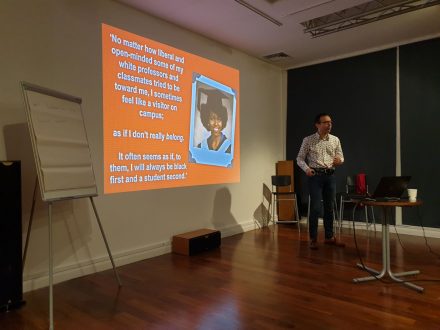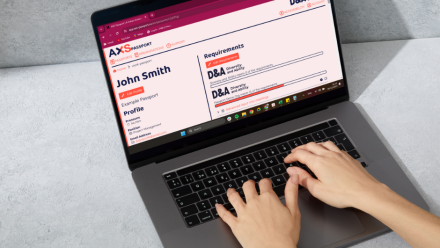Improving Diversity and Inclusion through belonging
28th February 2020 by Ellie Thompson
“Without belonging, Diversity and Inclusion will fail,”
- says Russell Beck from Imagine, Think, Do.
This week Tate Recruitment invited businesses to their first D&I seminar in Brighton and Russell and Atif Choudhury, D&A’s Chief Executive, were invited to share their insights about the importance of belonging in the workplace.
The business case for a diverse workforce is beyond a doubt. In fact, the World Economic Forum says the benefits are ‘overwhelming’. While this is the case, nearly $10 billion dollars is spent a year on diversity in America, but evidence shows it has done little to make the workforce more diverse. Diversity may have focused on getting people through the front door, but there’s been less focus on making sure those diverse views will be heard.
Atif agrees:
“Diversity is about counting people, inclusion is about insisting they count…
It’s important we anticipate your welcome for employees. What do we miss when we don’t get belonging right? The bravest words are ‘I need help’ and that is very difficult to do if you don’t feel you belong.
“At my daughter’s school they have a friendship bench and if anyone can’t find someone to play with, they go and find someone at the friendship bench. If five-year-olds can do it, we can do it!”
How can we bring our whole selves to work and feel a sense of belonging? @AtifChoudhury discusses his thoughts at today's @TateBrighton event#Diversity #inclusion pic.twitter.com/J2v5XHW2Qk
— Diversity and Ability (@DandA_inclusion) February 27, 2020
So, it’s important we value authentic participation and ensure people feel welcomed.
You can be included but unless you are truly heard, it’s irrelevant. And this is where belonging comes into play.
Russell says: “Companies are lagging behind if they do not become more diverse. Diversity and Inclusion are not the problem, but we’ve been looking at the wrong end of the kaleidoscope as we’ve not looked at the importance of belonging. Get that right and you’ll win the D&I challenge, which is better for everyone.”
D&I grabs our intellect, but not our hearts according to a Harvard Business Review. So belonging is where we need to focus. When you belong you can bring your whole self to work, which benefits everyone.
“Wearing glasses now has become normalised but years ago people needing glasses would have struggled to work and belong. So, we need to remember that when we think of what difference means today,” shares Atif.
“We’re an 85 per cent disabled-led team and I’m interested in the diversity of thought and what it takes for everyone to come to work and if that is met what do we get to become or learn from that?”
Research shows good relationships keep us happier and healthier and the quality of our relationships is important. This has an impact at work too – so much so that having a best friend at work makes us seven times more likely to be engaged in our work.
Nearly 40 per cent of people are more likely to leave work if they feel they don’t belong. And nearly 60 per cent who feel they don’t belong have sleep problems.
When people feel included in their team, there’s a 56 per cent increase in job performance and 75 per cent less sick days. When people belong, they are more likely to express ideas at work and won’t feel they need to hide parts of themselves.

Russell Beck discusses the importance of belonging
What role does technology have on a sense of belonging?
“Social media usage is making us less socially active in the real world” Russell shares. “Work has a tremendous hole to fill this void to help people belong and get tangible benefits for your business.
“In a world of technology, what sets organisations apart is the quality and engagement of its people.”
Top tips to increase a sense of belonging in your business
1/ Words: think about how you describe your business from the language used on your website to how you describe a job advert. There are AI tools such as Grammarly that can help you look at bias. For example, some tools will analyse who will apply for a job and how long it will take to fill it based on your language. For example, the words ‘developing’ rather than ‘managing’ will generally appeal more to women. Any formal language used will take longer for the role to be filled and if you use the word ‘you’, such as ‘you will do X’ in the role, people will feel like they belong.
2/ Induction: when you recruit, get the team to contact your new employee to welcome them into the team. Ask them about what they like doing, so if they like running, you can connect them with someone else in the team when they join who likes running too.
3/ See differences as strengths: focus on recognising and welcoming this into the team. All of our training takes an asset-based based approach.
4/ Communication: use people’s names, ask questions, be present and share stories with each other to encourage real connection. Explore our inclusive communications workshops.
5/ Meetings: appoint objective observers to identify if there are any missing voices in meetings and if so, see if you can encourage those people to join in.
Can we help your employees? We’d love to hear from you.


